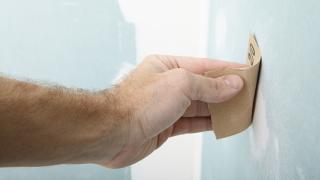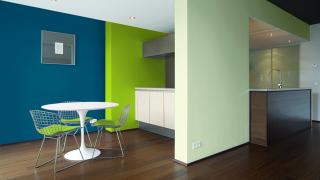Good to see you
Welcome to nordsjo-professional
Terms and Conditions
Thanks! for registering
Successfully registered, please login
Registration complete
Forgotten your password?
Please enter email address associated to your account
Change Password
Password changed successfully.
Request sent!
Would you spare a minute to answer 3 questions
Registration complete
Successfully registered, please login
Delete Account
Painting Tips

Hints and tips on waterborne trim finished
- Lightly abrade the surface and dust off.
- Always use a good quality synthetic brush.
- Make sure that you use a suitable size of brush to fit the substrate.
- Lightly dampen the bristles (with water) before starting, this helps keep the bristles from clogging up.
On large surfaces (flush door etc) lightly dampen the surface, this helps the flow, avoid over wetting as this could lead to streaks.
If you would prefer to use a roller, no problem, but use the correct roller for the job, flock roller or similar, do not use a foam roller as this could lead to aeration (bubbles).
Do not thin the product, as this would lead to faster drying and lose of wet edge.
Apply a generous coating (adhering to spreading rates) laying off as you go. Once laid off, do not apply more paint or attempt to re-brush the surface as this will lead to flashing.
Apply 2 coats of gloss as this will give a higher sheen level.
If working with the product for a length of time, wash the brush out every 2 - 3 hours, this will keep the bristles flexible, giving you a better finish.
Once the project has been finished, clean out your brush thoroughly (soap and water) and store so the bristles will not be damaged, and ready for the next project.
Hints and tips on installing feature wall wallpapers
Before any work can begin, as ever, preparation is key if you are to achieve a flawless finish.
Here are a few things to consider before work starts:
- Which wall are you going to recommend? This may sound obvious but it's not necessarily always a case of opting for the chimney breast wall or the one with the largest surface area as the feature. Consider aspects such as furniture, lighting and permanent features such as windows and radiators
- Consider the pattern and colour of the proposed paper. What is the customer looking to achieve? A clever use of design and colour can create the illusion of a larger or taller room, a feeling of warm or cool or even give a sense of vibrancy
- Once you've made your choice, it's time to focus on the paint, as it is always easier to match paint to paper rather than the other way round
Here are a few tips when it comes to hanging wallpaper on a feature wall:
- Measure the amount needed, allowing 50mm top and bottom for cutting
- Always check batch numbers and condition of paper before starting work
- As with any decorating project, preparation is key. Thorough preparation and cross lining the walls before papering is always advised
- Always use the paste recommended by the wallpaper manufacturer
- Carefully set out the wallpaper before use, to ensure the design repeat is balanced both horizontally and horizontally
- Once the design repeat has been measured and divided according to the height and width of the chosen wall, the ideal starting point can be determined
- Consider centring the pattern over a mantelpiece, or in the middle of the chosen feature wall for the best results
- Try and keep the pattern "whole" at the top as this area is more noticeable; cutting through the pattern at the skirting will not be as obvious
- Once you have chosen your starting point, plumb a line to work from, and work in both directions towards the corners to give a nice balanced look
- If using a very fine pattern, once the top of the paper has been decided, perhaps in pencil, lightly put a T (top) on each piece
- There are currently lots of paste the wall wallpapers on the market, the benefits are faster application, easier to strip, and no soak time. Only paste, just over a papers width. Use a wallpaper smoother tool (as using a brush will contaminate the finish paper). The paste the wall wallpapers do not become flexible, therefore it is better to use the smoother tool for assisting in cutting in.
- As with any job, it is not only professional, but a safety requirement to keep the workplace neat and tidy. We recommend having a bin liner handy to place all off cuts into and placing any larger pieces over a door so these can then be repasted and used if needed. Finally, always have a clean bucket of water and a sponge at hand, to clean ceilings and trim as you work
Add a new job
Add a new job
Edit job
Delete job
Are you sure? All notes, photos and saved items will be deleted.
Add to job
Save to My Workspace



